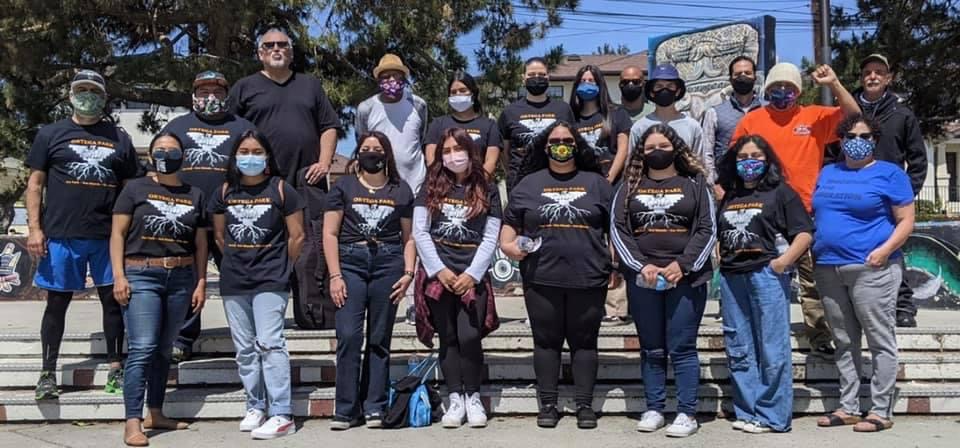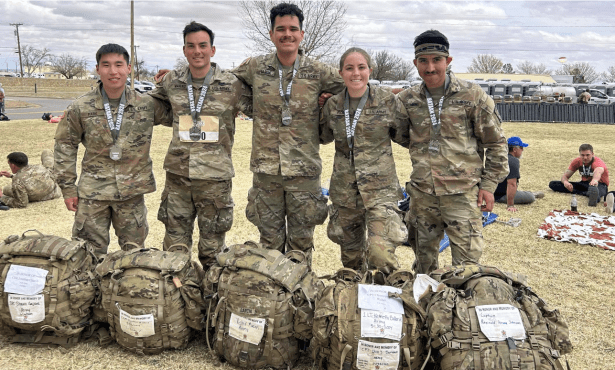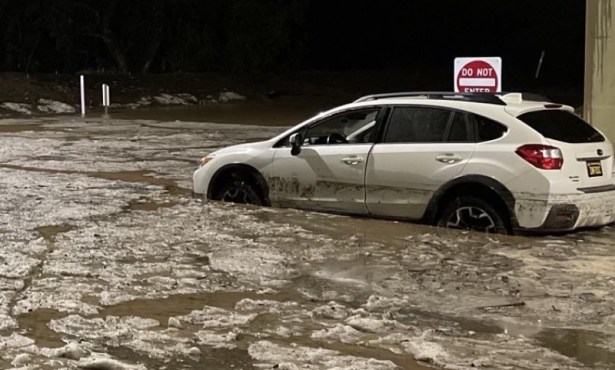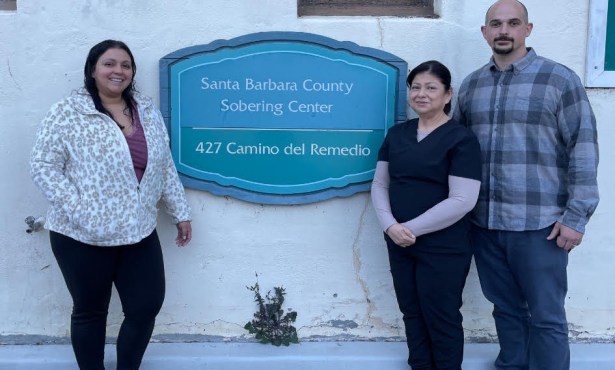Residents Turn Out En Masse to Demand Ortega Park Murals Be Saved
Bilingual Saturday Event Organized By One Community Bridge Project, Bienestar Latinx, and City Officials

This Saturday, a throng of Santa Barbara residents turned out to Ortega Park to voice their ideas for the future of the park’s murals. The murals ― colorful depictions of Aztec, Chumash, and Chicano imagery ― were originally slated for removal as part of a city-funded redevelopment plan meant to bring new amenities to the space, such as sports fields, a heated swimming pool, tree-lined promenades, and more.
But, upon learning about the plans that included no mention of preserving the murals, local residents and activists last year called upon the City Council to find a way to save the works of art. They continued to speak out on Saturday, this time in person at a bilingual event organized by the One Community Bridge Project, Bienestar Latinx, and the City of Santa Barbara.
With about 150 people in attendance, many citizens demanded that the city leave the park and the murals as they are, or at least preserve the murals while updating and adding amenities. This viewpoint was voiced despite the fact that the city has already determined that some of the murals have weathered enough damage that they can’t be safely relocated and will have to be repainted or memorialized in another way.
Other suggestions included adding artwork representative of the Eastside’s Black, Asian, and Italian communities, and dedicating city funds to expand youth art programs, especially so neighborhood kids can continue Santa Barbara’s muralist traditions.
The 18 pieces, first painted by local and international artists in the late 1970s with additions over the years, are important cultural artifacts representing Santa Barbara’s Indigenous and Chicano heritage, the majority of citizen speakers said.
Many of those speakers were lifelong Eastside residents who have been going to Ortega Park their entire lives. Some learned to swim in the park’s public pool, played basketball on the courts, and picnicked with family on the weekends. The murals, they said, are influential fixtures in the backdrop of their memories.
“These murals give people a sense of identification, direction, motivation, and with that comes a sense of community stewardship,” said John Huerta, a seventh-generation Santa Barbara resident and One Community Bridge Project member. “For me, they represent a window into the past that allows me to exist as I am today in the present.”
As children, others literally lent a hand in the murals’ creation. They washed brushes, mixed colors, and even helped paint the pieces under the guidance of the artists, which included Manuel Unzueta and Armando Vallejo, both Santa Barbara residents who were in attendance Saturday.
For world-renowned artist Unzueta, the involvement of local children ― including his own niece and nephews ― in creating the pieces should be celebrated and respected.
“I think within the project of the city, there is room to make sure that the historical expression of art that has been done here by a thousand children” is preserved, he said.
Santa Barbara youth continue to maintain a sense of stewardship over the murals and have undeniably helped propel the preservation efforts forward. Before Saturday’s event, local middle and high schoolers, along with college students, canvassed around the Eastside under the leadership of Bienestar Latinx. They informed neighbors about the park redevelopment plan and the movement to save the murals.
Santa Barbara High School Ethnic Studies Club President Lilyanna Jaimes and Vice President Blanca Juan González spoke candidly to the city’s elected officials in attendance, which included Mayor Cathy Murillo, District 1 Councilmember Alejandra Gutierrez, and others.
“If you’re truly doing this for the community, then listen to us,” Jaimes said, “and please do all you can for the people who live and grew up here, and not for the people who vacation here for a weekend.”
At the start of the event, Councilmember Gutierrez ― who grew up on the Eastside ― apologized on behalf of the city for neglecting to first consult the community about the mural removal plans. She said the city will review Saturday’s feedback and determine how to incorporate it into the redevelopment project.
“We have to hold each other accountable,” she said, “and that’s how we can [begin] this changing process, and also [begin] to heal.”
At the helm of the mural preservation effort is Mark Alvarado, director of One Community Bridge Project and a former city staffer. He said if the city allows the project to move forward in a “truly community-centered effort, then I think it’ll be a win-win.
“If this doesn’t demonstrate to the city that [effective community outreach] is important, then they’re not listening,” Alvarado said.
Support the Santa Barbara Independent through a long-term or a single contribution.



